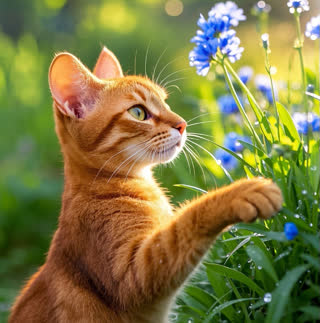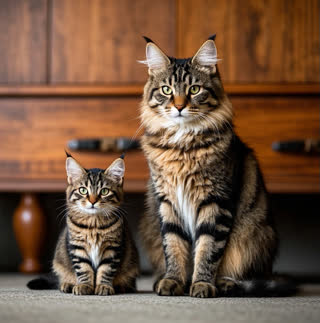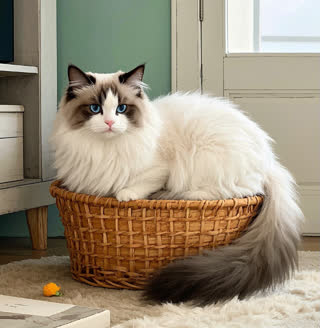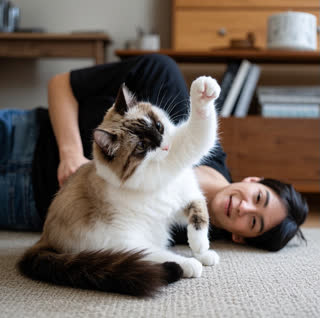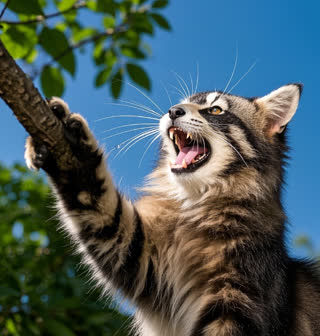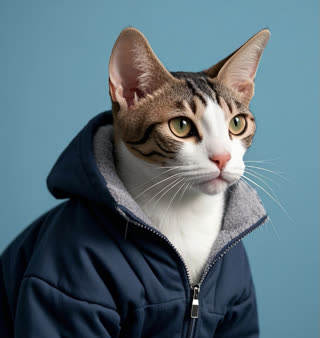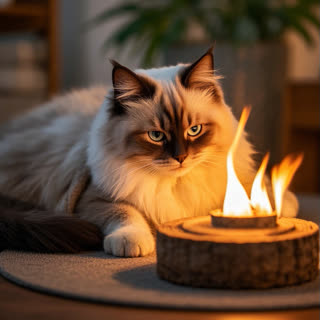Cats are known for their quirky and unpredictable behaviors, and one of the most puzzling yet entertaining is when they suddenly start zooming around the house at breakneck speed. If you're a cat owner, you've probably witnessed this phenomenon, often referred to as "the zoomies." But what exactly causes cats to engage in these sudden bursts of energy? In this article, we'll explore the top reasons why cats suddenly zoom around, backed by expert insights and scientific explanations.
1. Burning Off Excess Energy
Cats are crepuscular animals, meaning they're most active during dawn and dusk. However, many indoor cats lead sedentary lifestyles, spending up to 16 hours a day sleeping. This prolonged inactivity can lead to pent - up energy that needs to be released. When cats suddenly start zooming around, it's often their way of burning off this excess energy. Think of it as a natural workout for your feline friend.
To help your cat manage their energy levels, provide them with interactive toys like laser pointers or feather wands. These toys simulate prey and encourage your cat to engage in physical activity. Additionally, scheduling regular playtimes throughout the day can help prevent your cat from accumulating too much energy.
To help your cat manage their energy levels, provide them with interactive toys like laser pointers or feather wands. These toys simulate prey and encourage your cat to engage in physical activity. Additionally, scheduling regular playtimes throughout the day can help prevent your cat from accumulating too much energy.
2. Hunting Instincts
Even though domesticated cats have access to regular meals, their hunting instincts are still deeply ingrained. Cats are natural predators, and they have a strong desire to chase and capture prey. When they spot a fly, a piece of lint, or even an imaginary "prey," it can trigger their hunting instincts and cause them to zoom around in pursuit.
To satisfy your cat's hunting instincts, you can use toys that mimic the movement of small animals. Puzzle feeders are also a great option, as they require your cat to work for their food, simulating the hunting process.
To satisfy your cat's hunting instincts, you can use toys that mimic the movement of small animals. Puzzle feeders are also a great option, as they require your cat to work for their food, simulating the hunting process.
3. Stress and Anxiety
Cats are sensitive animals, and changes in their environment can cause them stress and anxiety. Moving to a new home, the introduction of a new family member (human or pet), or loud noises can all trigger stress - induced zoomies. When cats feel stressed, they may run around as a way to cope with their anxiety.
To help reduce your cat's stress, provide them with a safe and quiet space where they can retreat when they feel overwhelmed. You can also use pheromone sprays or diffusers to create a calming environment. If your cat's stress seems to be chronic, it's best to consult with a veterinarian or an animal behaviorist.
To help reduce your cat's stress, provide them with a safe and quiet space where they can retreat when they feel overwhelmed. You can also use pheromone sprays or diffusers to create a calming environment. If your cat's stress seems to be chronic, it's best to consult with a veterinarian or an animal behaviorist.
4. Post - Poop Euphoria
It's a common sight to see a cat sprint out of the litter box after using it. This behavior is often referred to as "poo - phoria." When a cat defecates, it can stimulate the vagus nerve, which runs from the brain to the colon. This stimulation can cause a feeling of euphoria, leading the cat to celebrate with a post - poop zoom.
To ensure your cat's comfort, keep the litter box clean and in a quiet, accessible location. If your cat seems to be in pain or discomfort after using the litter box, it's important to have them checked by a veterinarian.
To ensure your cat's comfort, keep the litter box clean and in a quiet, accessible location. If your cat seems to be in pain or discomfort after using the litter box, it's important to have them checked by a veterinarian.
5. Playful Behavior
Cats are playful by nature, and zooming around can be a form of play. They may run around for no apparent reason other than to have fun. This is especially common in kittens and younger cats, who have more energy to burn.
To encourage playful behavior, provide your cat with a variety of toys and play with them regularly. You can also create an obstacle course for your cat to explore.
To encourage playful behavior, provide your cat with a variety of toys and play with them regularly. You can also create an obstacle course for your cat to explore.
6. Medical Issues
While most cases of cat zoomies are harmless, there are times when they can be a sign of an underlying medical issue. Allergies, fleas, ticks, and certain health conditions can cause a cat to feel itchy, uncomfortable, or in pain, leading them to run around in an attempt to alleviate these symptoms.
If your cat's zoomies are accompanied by other symptoms such as excessive scratching, hair loss, or changes in appetite or behavior, it's important to have them examined by a veterinarian.
If your cat's zoomies are accompanied by other symptoms such as excessive scratching, hair loss, or changes in appetite or behavior, it's important to have them examined by a veterinarian.
7. Reacting to External Stimuli
Cats have highly sensitive senses, and they can react to external stimuli that humans may not even notice. A sudden noise, a strange smell, or a movement outside the window can all startle a cat and cause them to run.
To minimize your cat's exposure to startling stimuli, keep their environment calm and predictable. Avoid sudden loud noises and make sure they have a safe place to hide if they feel threatened.
To minimize your cat's exposure to startling stimuli, keep their environment calm and predictable. Avoid sudden loud noises and make sure they have a safe place to hide if they feel threatened.
8. Aging - Related Issues
As cats age, they may experience cognitive decline or sensory impairments, such as hearing or vision loss. These changes can cause them to become disoriented or confused, leading to erratic behavior like zooming around.
If you notice that your older cat is engaging in more frequent or intense zoomies, it's important to have them evaluated by a veterinarian to rule out any underlying health issues.
If you notice that your older cat is engaging in more frequent or intense zoomies, it's important to have them evaluated by a veterinarian to rule out any underlying health issues.
How to Deal with Cat Zoomies?
When your cat is in the middle of a zoomie episode, it's best to let them be. Trying to catch or restrain them can cause them to become more stressed or anxious. Instead, enjoy the show and make sure your cat has a safe space to run around. You can also use toys to redirect their energy into a more constructive activity.
If your cat's zoomies are becoming a problem, such as waking you up at night or causing damage to your home, there are a few things you can do. Increase your cat's physical and mental stimulation during the day by providing them with plenty of toys, playtime, and interactive activities. You can also adjust their feeding schedule to ensure they have enough energy during the day and are more likely to sleep at night.
When to Be Concerned?
While cat zoomies are usually harmless, there are times when they can be a sign of a more serious issue. If your cat's zoomies are accompanied by other symptoms such as vomiting, diarrhea, loss of appetite, or lethargy, it's important to have them checked by a veterinarian. Additionally, if your cat's zoomies are becoming more frequent or intense, it's a good idea to consult with a veterinarian or an animal behaviorist.
Conclusion
Cats suddenly zooming around is a common and usually harmless behavior. By understanding the reasons behind it, you can better meet your cat's needs and ensure they lead a happy and healthy life. Remember, every cat is unique, and what works for one may not work for another. With patience and understanding, you can help your cat manage their energy and behavior in a way that works for both of you.


